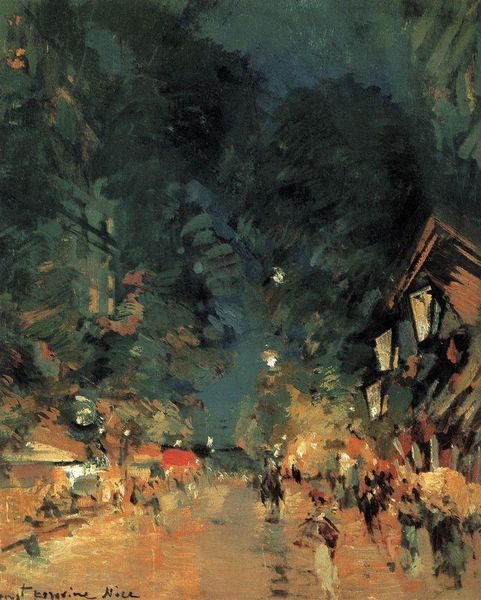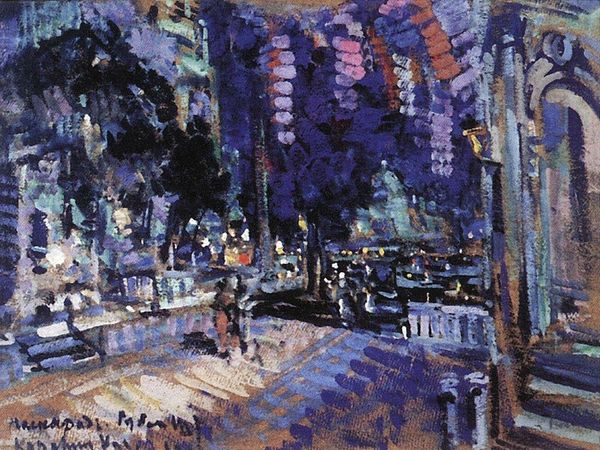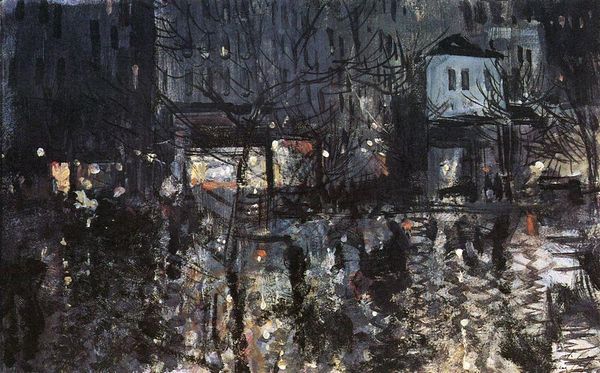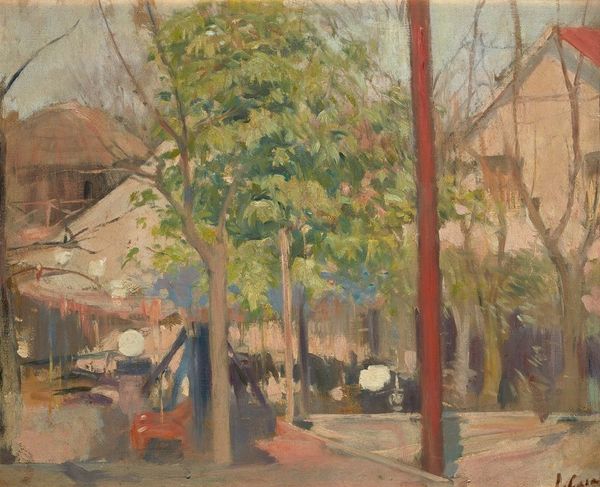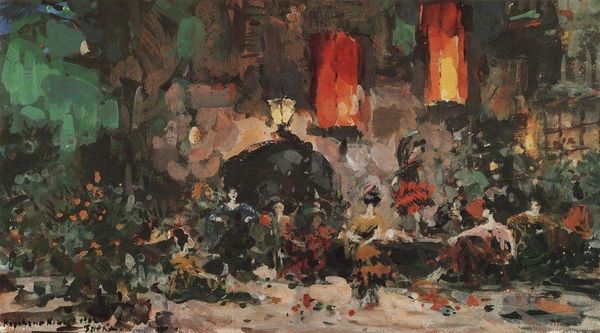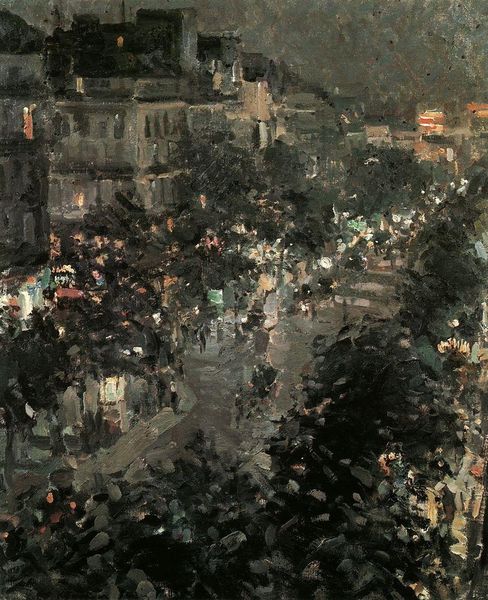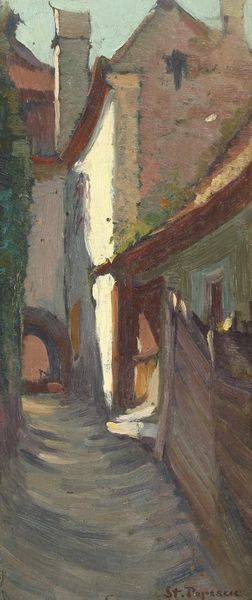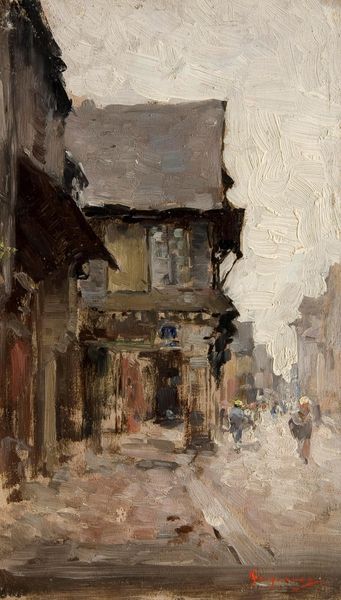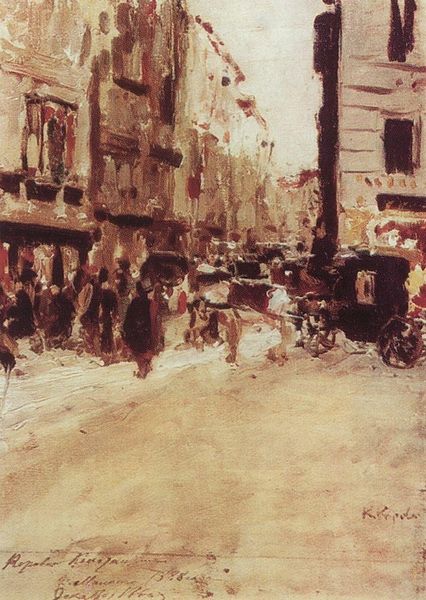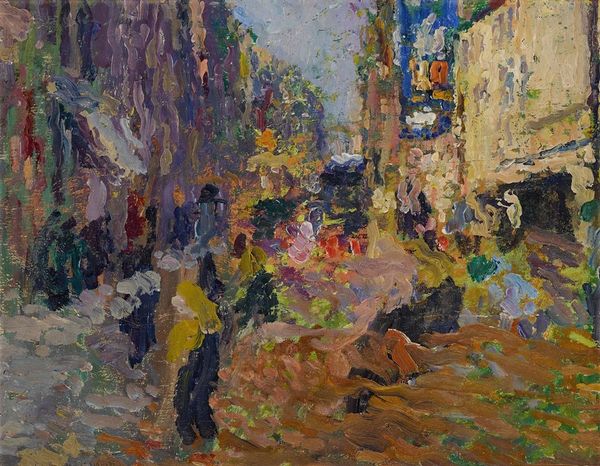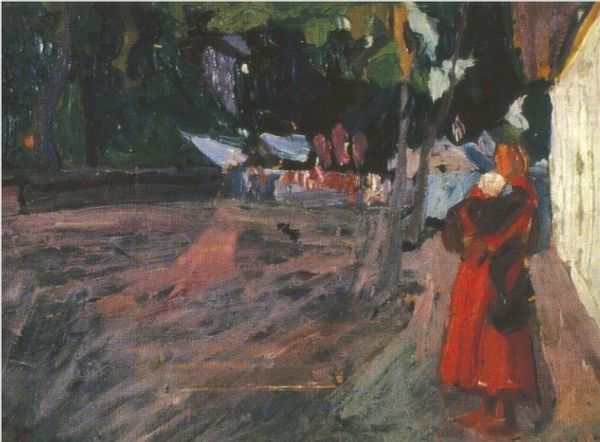
Copyright: Public domain
Curator: Konstantin Korovin painted "Yalta at Night" in 1905, a captivating example of Russian Impressionism rendered in oil paint. Editor: My first impression is one of mystery. It’s dark, almost ominous, yet those patches of light draw you in, like moths to a flame. Curator: Absolutely, and what's crucial to understanding this piece is acknowledging the sociopolitical turbulence brewing in Russia at the time. The Russo-Japanese War had just ended, social unrest was growing, and the old order was beginning to crumble. This painting captures a specific moment of anxiety and transition in society. The shimmering lights and the thick impasto could represent this uneasy calm before a big change. Editor: I see your point. But the light for me has another meaning. I see echoes of nocturnes by Whistler. In this period, electricity was spreading across European cities, becoming a symbol of progress, a promise, a better future for the common folk, just like street lights. Perhaps these little lamps offer the viewers glimmers of optimism in times of upheaval. The quick brushstrokes make me think of fleeting moments. It gives the impression that the night is alive. Curator: Yes, those vibrant dashes are vital for conveying the ephemeral nature of night. They also reinforce the class disparities in a place like Yalta. While some enjoyed leisure and dazzling illumination, the working class may have faced an even harsher reality in those shadowed backstreets. Editor: The colours enhance the contrasts: that cobalt blue in the sky against the warm, ochre glows from the buildings creates a push and pull. What I also find fascinating is that despite it being a cityscape, it's still an invitation to consider a connection to the natural world. I noticed tree branches, they look very ghostly. Curator: I agree that those ghostly, almost skeletal branches serve as a reminder of the natural cycle of decay, and the limits of our control over the environment. Editor: A beautiful point. Well, it appears this painting reveals layers the more we look into it. It's an illustration of both artistic vision and complex social ideas, I must say. Curator: Exactly, and I believe approaching artworks through this lens gives audiences a more complete experience.
Comments
No comments
Be the first to comment and join the conversation on the ultimate creative platform.
